Over 20 years manufacturing experience of Road marking machine and road marking removal machine.
sales@lxdmarking.com+86 15805293662
Strategic Maintenance Tips for Longevity of Highway Striping Equipment
Effective maintenance is crucial for ensuring highway striping systems function optimally, thereby safeguarding road safety. Without proper maintenance, these systems can degrade, posing significant risks to drivers and pedestrians. So, how can you ensure your equipment remains reliable and efficient? Let's dive into the strategic maintenance tips that will keep your highway striping equipment in top condition.
Understanding the Importance of Regular Maintenance
Regular maintenance is not just a routine task but a strategic investment in the longevity and efficiency of these systems. Neglecting maintenance can lead to costly repairs and potentially hazardous conditions. Common issues include clogged spray nozzles, damaged hoses, and pressure gauge failures. By addressing these issues promptly, you can prevent major failures and ensure consistent performance.

Identifying Key Components
Several critical components require regular attention. Spray nozzles, reservoirs, pressure gauges, and hoses are particularly important. Proper maintenance of these parts prevents clogs, leaks, and other issues that can compromise performance.
Spray Nozzles
Clogged nozzles reduce spray efficiency. Regular cleaning with solvents and inspection for debris buildup are essential. For example, using soft brushes and solvents like brake cleaner can help unclog nozzles without damaging them.
Reservoirs
Reservoirs may lose pressure over time. Monitoring and maintaining optimal pressure levels are crucial for consistent performance. Using a pressure gauge and ensuring the tank is properly sealed and maintained can help.
Pressure Gauges
Pressure gauges must be checked regularly. Misreadings can affect the overall performance of the equipment. Replacing faulty gauges promptly can prevent inaccuracies. For instance, a city in California reported a significant improvement in spray consistency after replacing old, worn-out pressure gauges.
Hoses
Hoses can develop kinks or tears from heavy use. Regular inspection and proper storage are necessary to prevent these issues. Using protective sleeves and storing hoses in a dry, undercover environment can extend their lifespan.
Implementing a Comprehensive Maintenance Schedule
A well-structured maintenance schedule is essential for optimal equipment condition. Here’s a tailored maintenance schedule: - Daily: Quick checks and cleaning to prevent clogs and ensure all components are in good condition.
- Example: Quick visual checks for any visible damage, ensuring all nozzles are clean, and topping up fluid levels.
-
Weekly: Thorough cleaning using specialized solvents, ensuring hoses are free from kinks or tears, and inspect all components.
-
Example: Using high-pressure cleaning to remove stubborn dirt and debris from nozzles and hoses.
-
Monthly: Pressure testing the sprayer, ensuring optimal performance, and any necessary overhauls.
-
Example: Conducting a pressure test and calibrating the sprayer to ensure it is operating within optimal parameters.
Best Practices for Daily and Weekly Maintenance
Regular maintenance should be a priority. Here are some best practices: - Daily: Quick checks and cleaning to prevent clogs and ensure all components are in good condition.
- Example: Visually inspect the spray nozzles and reservoirs, and clean any visible debris to ensure no clogs.
-
Weekly: Thorough cleaning, inspection for wear signs, and addressing minor issues to prevent costly repairs.
-
Example: Use solvents to clean the reservoir, check for any wear on hoses, and replace any faulty components.
Advanced Maintenance Techniques
Advanced maintenance techniques extend the equipment's lifespan even further. These include: - High-Pressure Cleaning: Use specialized solvents and equipment to remove stubborn dirt and debris.
- Example: Utilizing high-pressure cleaning to remove old paint and grime from nozzles and hoses without damaging them.
-
Proper Storage: Prevent rust and other damage by storing the equipment in a dry, undercover environment.
-
Example: Using protective sleeves for hoses and storing the equipment in a covered shed to prevent moisture and dust buildup.
-
Regular Calibration: Ensure optimal pressure settings are maintained for consistent performance.
-
Example: Regularly calibrating the pressure gauge to ensure accurate readings and consistent spray patterns.
Success Stories of Proactive Maintenance
Cities and companies that implement comprehensive maintenance schedules see tangible benefits. Daily cleaning and weekly inspections lead to improved performance and longer equipment lifespan. Cost savings from reduced repair costs and downtime are significant. For instance, a city in California reported a 35% reduction in maintenance costs and a 20% decrease in equipment downtime after implementing a robust maintenance plan.
Future Trends and Innovations
Emerging trends in maintenance include: - Real-Time Monitoring Systems: Predictive maintenance to anticipate equipment needs.
- Example: Systems that can detect early signs of wear and send alerts before major failures occur.
-
Automated Cleaning Technologies: Efficient cleaning methods that save time and resources.
-
Example: Automated cleaning systems that can clean nozzles and hoses without manual intervention.
-
Green Practices: Water-saving techniques for sustainable maintenance.
-
Example: Using water-efficient nozzles and recycling wastewater to minimize water usage.
Conclusion
Regular maintenance is essential for the longevity and efficiency of highway striping equipment. By following a comprehensive maintenance schedule and adopting best practices, you can significantly enhance the performance and lifespan of your equipment. Implementing these strategies not only ensures safer roads but also saves costs and reduces downtime. Proactive maintenance is key to maintaining optimal road safety and efficiency. Embrace these practices to keep your equipment in top condition and contribute to safer roads. By following these strategic maintenance tips, you can ensure that your highway striping equipment remains reliable and efficient, contributing to safer roads and a smoother transportation experience.
-
6.Hoses
-
12.Conclusion

